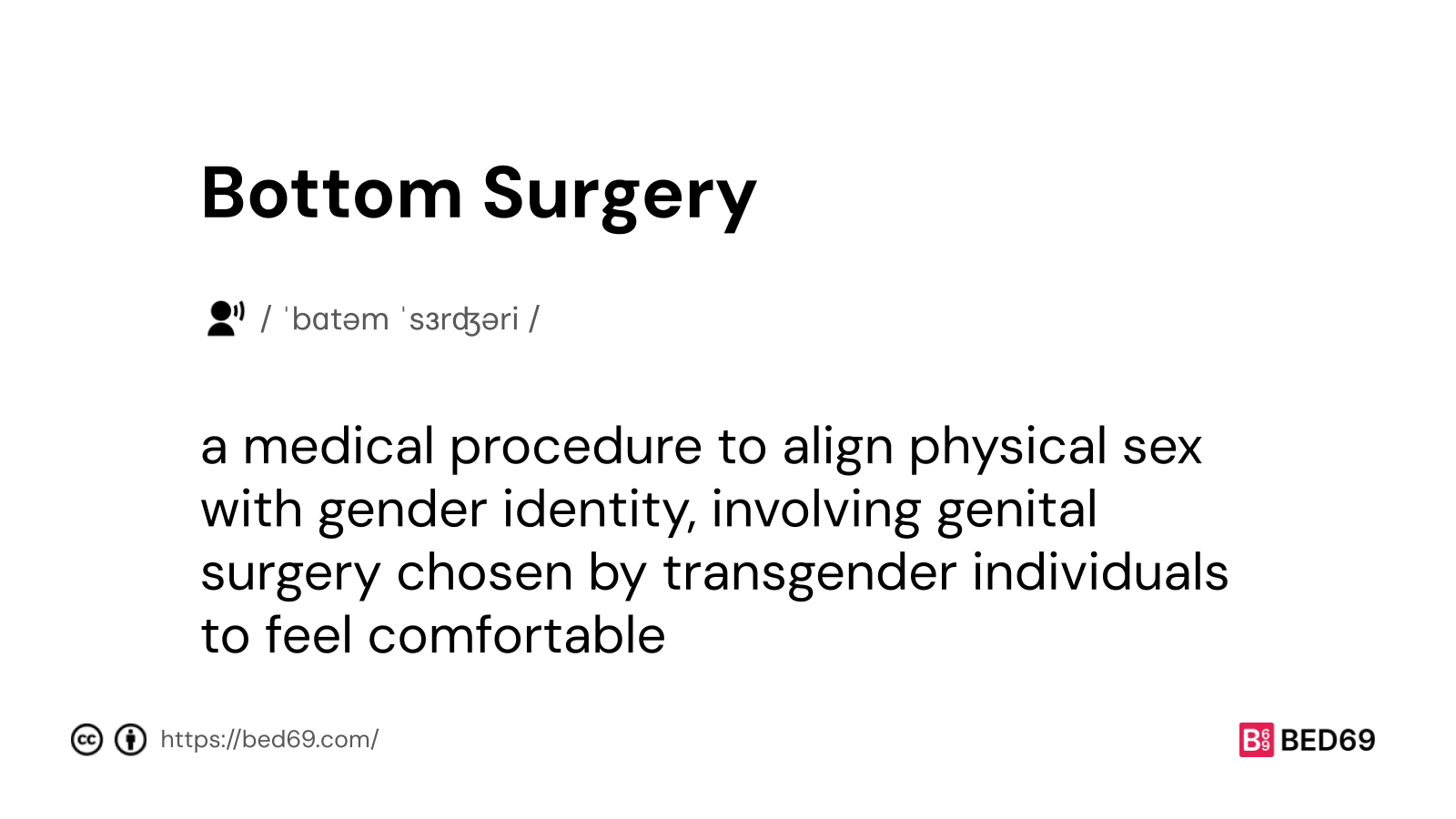What is Bottom Surgery?
Bottom Surgery, also known as gender affirmation surgery, aligns a person’s physical sex with their gender identity. It involves surgery on the genitals and is chosen by transgender men and women. This helps them feel more comfortable in their bodies.
Bottom Surgery pronunciation: / ˈbɑtəm ˈsɜrʤəri /

What precautions should be taken before bottom surgery
Before undergoing bottom surgery, it’s crucial to take certain precautions to ensure a safe and successful procedure. Firstly, it’s essential to consult with experienced healthcare professionals who specialize in transgender care. They can provide guidance on the surgical process, potential risks, and post-operative care. Additionally, individuals considering bottom surgery should thoroughly research the procedure, understand the possible outcomes, and have realistic expectations.
Preparing mentally and emotionally is just as important as physical preparation. Seek counseling or support groups to discuss your feelings, fears, and expectations surrounding the surgery. It’s advisable to maintain good overall health by following a balanced diet, regular exercise routine, and avoiding smoking or excessive alcohol consumption.
Lastly, ensure you have a strong support system in place to assist you during the recovery period. Bottom surgery is a significant decision, so taking these precautions can help you navigate the process with confidence and readiness.
Notable benefits of bottom surgery
Bottom surgery, also known as gender affirmation surgery, can bring significant benefits to transgender individuals. It helps align physical characteristics with gender identity, enhancing comfort and well-being. For many, this surgery is a crucial step towards feeling more authentic and at peace with themselves.
By undergoing bottom surgery, individuals can experience increased self-confidence and improved mental health, leading to a more positive self-image and quality of life.
Moreover, bottom surgery allows transgender men and women to feel more aligned with their true selves, reducing gender dysphoria and enhancing overall happiness. It provides a sense of wholeness and completeness, affirming their gender identity in a profound way. Through this transformative process, individuals can live more authentically and comfortably within their bodies, promoting a sense of empowerment and self-acceptance.
Explore other interesting terms:
